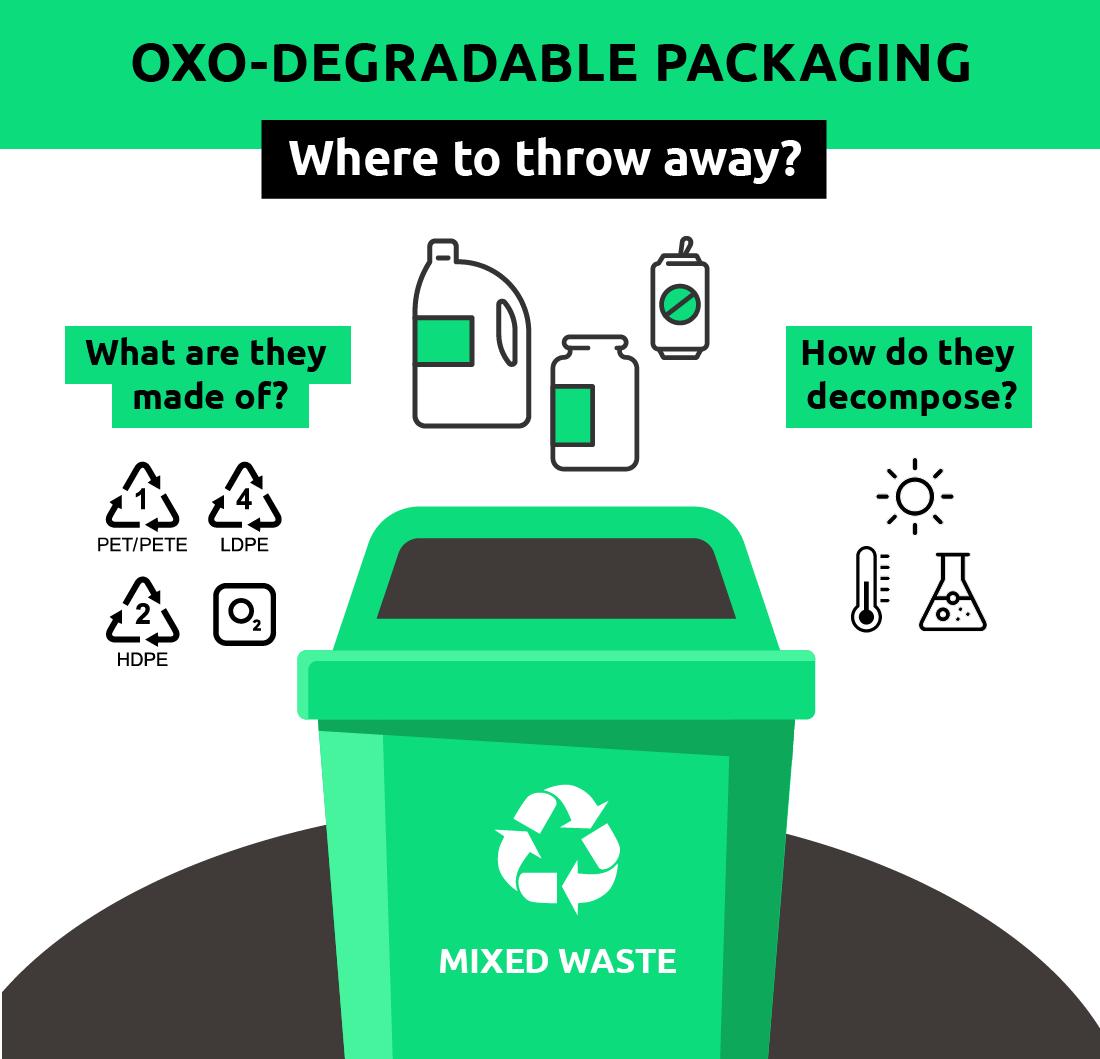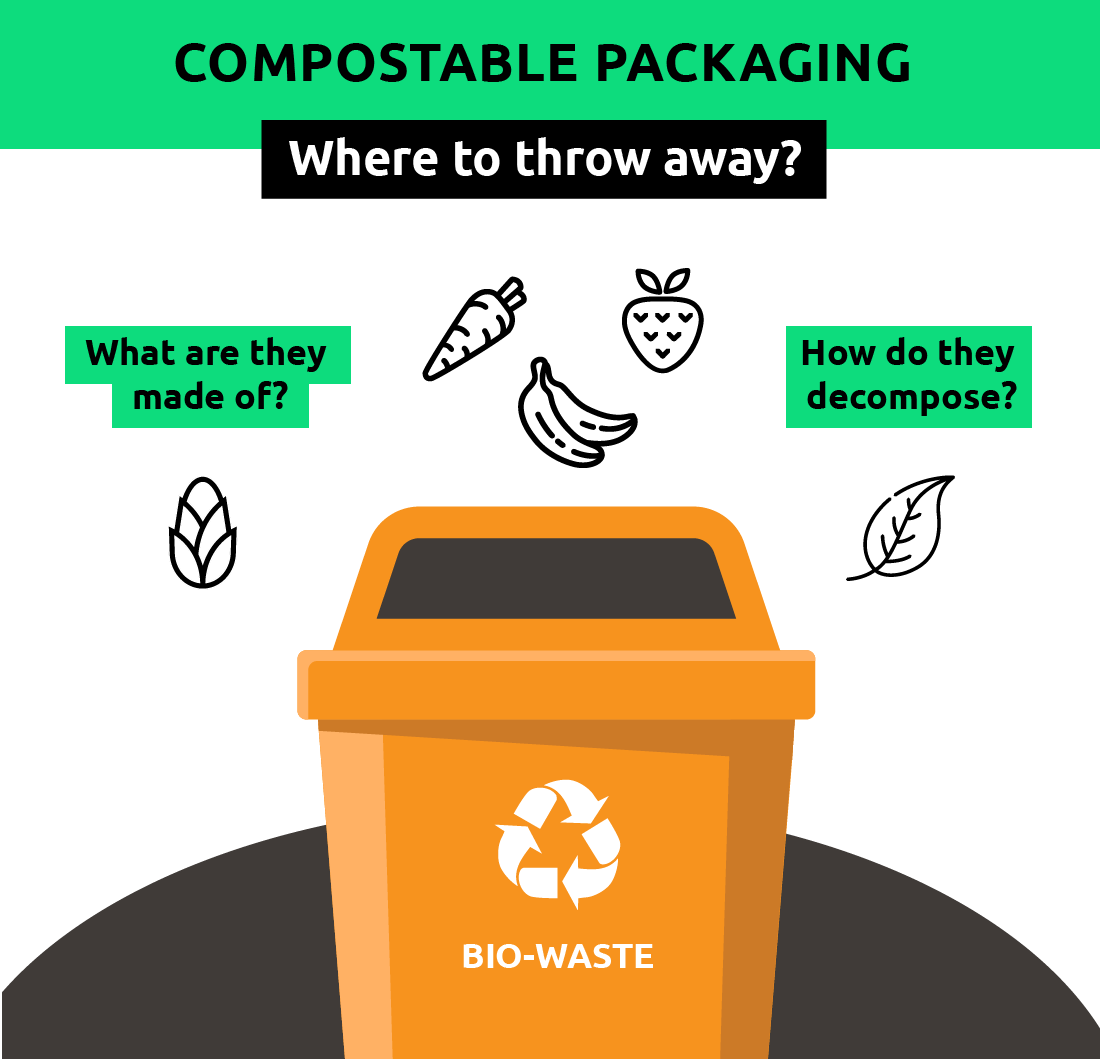

Compostable, biodegradable, and oxo-degradable - how not to get confused and choose wisely?
Did you know that the plastic shopping bag is made of a completely different type of plastic than, for example, a bottle of shampoo? In the world of plastics, we distinguish 7 varieties of this material. Each has different properties, and some of them can be recycled. Check which plastic varieties are safe for health and the planet, and which ones are worth giving up.
Biodegradable equals harmless to the environment?
In this day and age, manufacturers strive to make more and more packaging biodegradable. What does it mean? Such materials are made of various types of natural and synthetic blends. For example, SILBO packaging includes such variants of components as:
- PE film and mesh,
- PP film and mesh,
- laminate and carefully selected mesh,
- PE or PP paper and mesh,
- paper and cellulose film.
Okay, but does the prefix "bio-" really mean that we deal with friendly packaging? The fact is that this material is less harmful to the planet than ordinary plastic. This is because it is not going to linger in the landfill indefinitely, decomposing there for hundreds of years.
Biodegradation (biotic degradation) is, in other words, the process of decomposing organic compounds into simple inorganic compounds.
The term "biodegradable" is used to refer to all those products that can be easily broken down by natural factors such as water, oxygen, sun rays, acid rain, fungi and soil microorganisms (e.g. Nitrosomonas and Nitrobacter). Plastics with biodegradable polymers are simply "treated" by living microorganisms as food.
For example, a banana peel is biodegradable and environmentally friendly, as it ends up in the soil and is degraded. Oxygen, water, moisture and heat facilitate decomposition by breaking down complex organic forms into simpler units. The decomposed matter eventually blends or returns to the soil, so that the soil is re-fed with various nutrients and minerals.
In the initial process of biodegradation, mechanical decomposition, i.e. fragmentation, takes place, and subsequently smaller fragments are mineralised by microorganisms in order to biodegrade in the final stage.
Standard plastics are subject to mechanical and chemical degradation. The only question that arises is how long this process lasts and what influence these fragments dispersed in the environment, which have not yet been mineralised, have on animate and inanimate nature. In addition, things get tricky in the case of packaging with specific physical properties, such as stiffness, transparency, heat sealability, barrier, colour imprints, and many others, for which it is necessary to use appropriate chemicals. So, even if biodegradation takes place, chemicals will still remain in the environment in the form of an “invisible drop”, which will be absorbed by plants in the future in the form of heavy metals and other hazardous substances.
Therefore, when talking about biodegradability, one should also refer to the time in which this process occurs and whether the end result of this process is the formation of a healthy compost pile. So "biodegradable" is not always synonymous with "compostable". This is how Andrej Kržan explains this dependence:
| The most commonly used criterion for the biodegradation of plastics during composting is that the rate of their fragmentation must keep up with the composting cycle, however mineralisation may require time. In the case of biodegradable plastics used, for instance, in agriculture, the process of their biodegradation may take longer1. |
Biodegradation itself may therefore take more time than is required for the composting process.
So "bio" packaging, in fact, has great potential, especially when the company additionally applies ecological production methods. For example, SILBO uses water-based paints that do not generate additional pollution.

So, what is that mysterious-sounding oxo-degradable packaging?
A separate category is made up of oxo-degradable packaging, which is made of polymer, or to put it bluntly, of plastic (polyester, PET, LDPE, HDPE).
Either ingredients accelerating its decomposition, i.e. TDPA (Totally Degradable Plastics Additives), or oxygen molecules are added to the structure of this artificial ingredient. The latter, by operating under specified conditions, i.e. subjected to high temperatures and UV rays, cut long polymer chains into shorter sections.
Unfortunately, the entire material, instead of disappearing, turns into an even more harmful microplastic. Therefore, today oxo-degradable packaging is being withdrawn from the market, including the EU2, due to being extremely harmful to the environment.

Compostable products- the best option for the natural environment
By far, the best category of packaging, from the environmental point of view, is packaging marked as compostable. It falls into the category of biodegradable plastics subjected to bio- decomposition under composting conditions over a short period of time.
They are easily distinguishable from others because they are marked with a green icon with the word "compostable". As a rule, they are also provided with standards such as ASTM D6400, EN 13432 or ISO 17088.
The aforementioned packaging is made of 100% natural, and thus - compostable materials, such as corn (and more specifically starch) or pineapple. Under ordinary external conditions, with the participation of organic bacteria, the material decomposes into its original form and returns to the soil. The cycle is now complete. This is why compost packaging can be thrown into the brown waste bin.
The term "compostable" is used when the biodegradability process occurs under certain conditions and time, and the concentrated "invisible drop" of chemicals in the compost does not adversely affect the environment and does not pose any threat to the environment. The parameters that must be complied with in order for the packaging to be compostable are regulated by the EU13432 standard on the basis of the EU directive on packaging (94/62 / EEC).
"Compostable" always means "biodegradable". Here again it is worth referring to Andrej Kržan, who writes that:
| Traditional plastics remain unchanged during the composting cycle of several weeks and must be removed from the compost, otherwise they will remain in the environment. If the plastic fragments are not mineralised, the compost will contain shredded material, the long-term impact of which on animate and inanimate nature is unknown. This poses a certain risk because the fragments dispersed in the environment are difficult to collect and it will cause them to remain there for an extended period of time. On the other hand, compostable plastics will degrade during the composting cycle and the mineralisation process will start in the period required for biodegradation of bio-waste (e.g. grass, organic kitchen waste). Only in the case of compostable plastics can we be sure that no substances with unknown environmental impact will be released into the environment. Differences between the degradation of traditional and compostable plastics consist in a different level of advancement of the decomposition and mineralisation processes3. |
The environmental costs are definitely minimal. But what about production costs? It is definitely the type of packaging that potentially generates the greatest expenses for the company. Technological difficulties related to the acquisition and processing of eco-materials are, unfortunately, considerable costs that not every company can cover.
However, we should bear in mind that although production is more expensive, the costs associated with carrying out an artificial biodegradation process in a composting plant are already deducted. It is certainly a development-oriented direction that we at SILBO are following with great optimism.

Responsible production and reasonable waste management
The recipe for success in the case of packaging is, primarily, conscious production using appropriate materials and technologies, and secondly the proper handling of waste after use. Nonetheless, the consumer plays a significant role in the entire process due to segregating the rubbish and transferring it to the appropriate processing plant.
It is always worth opting for solutions that will be a better alternative for the environment than non-recyclable plastic, and this is the approach that our company, SILBO, follows.
1http://www.plastice.org/fileadmin/files/PL_Biorazgradljiva_plastika_in_polimeri_Krzan.pdf
2https://eur-lex.europa.eu/legal-content/PL/TXT/PDF/?uri=CELEX:52018DC0035&from=DE
3http://www.plastice.org/fileadmin/files/PL_Biorazgradljiva_plastika_in_polimeri_Krzan.pdf
Zobacz również:
Most frequently read

About company
Silbo – packaging production experts with 20 years of experience in the industry. We support environmental protection on many levels, for example with creating new, biocompostable standards in the field of packaging production. These are the main values on which the activity of SILBO is based: focusing on innovation, ecology and quality issues.


Received certificates
















